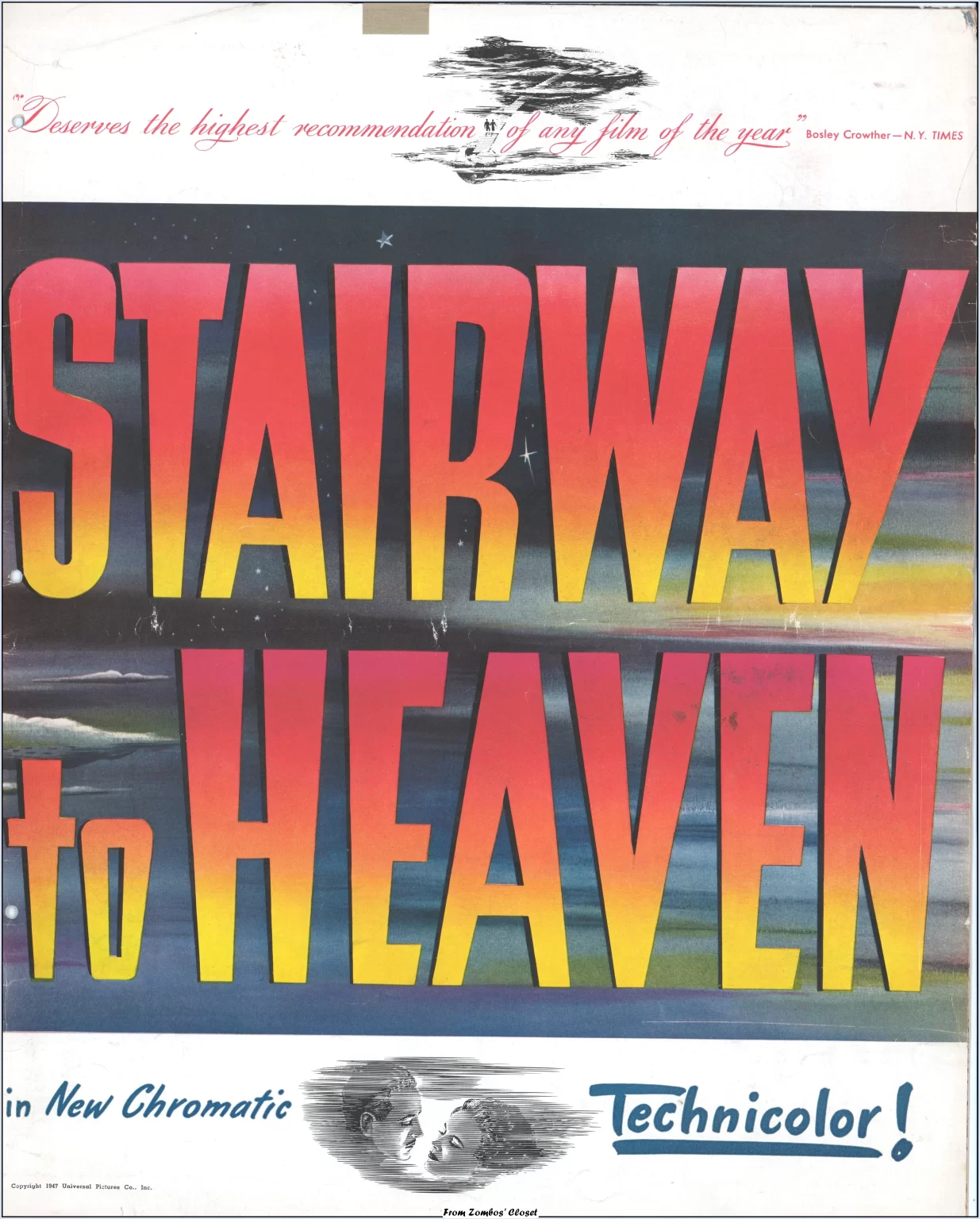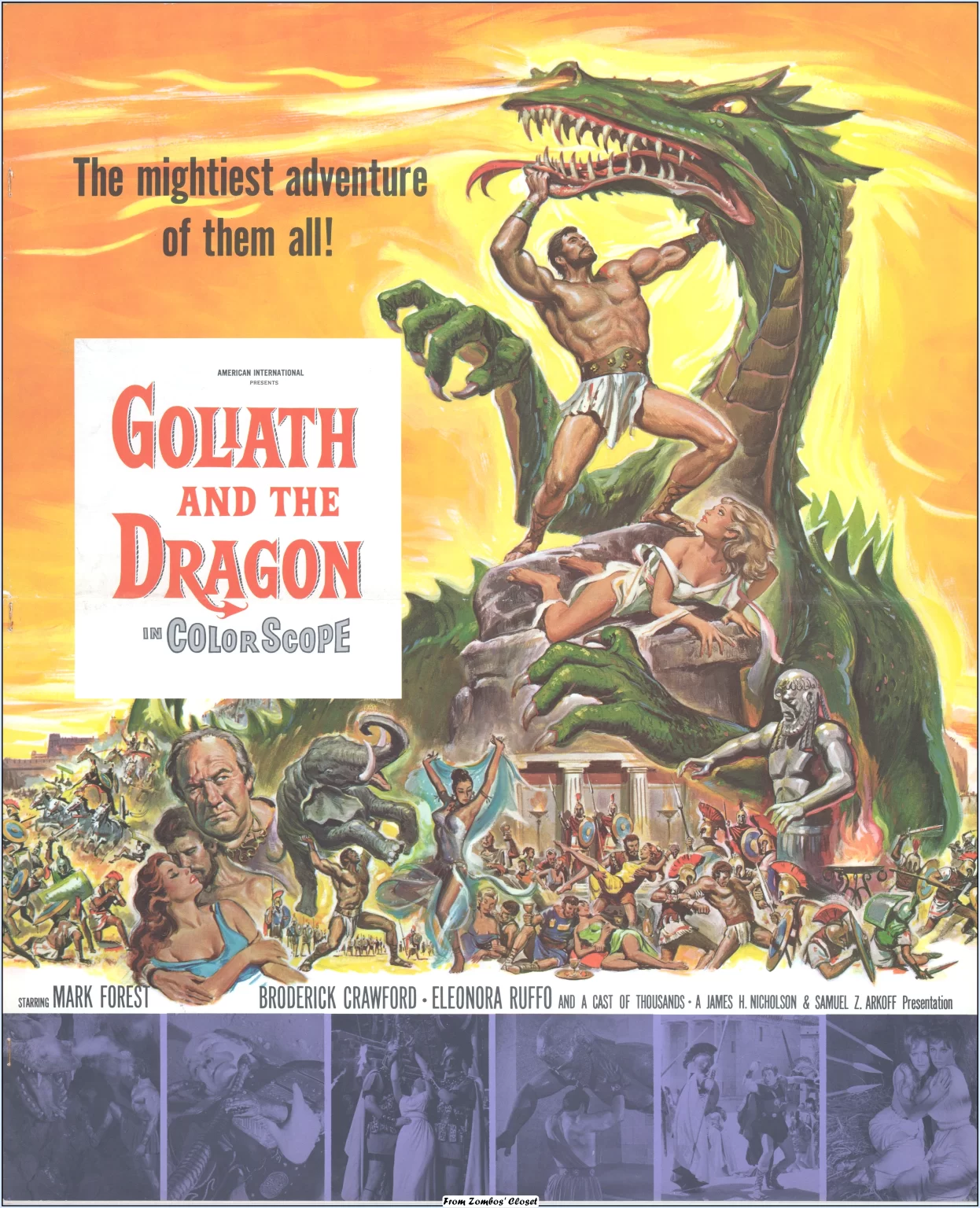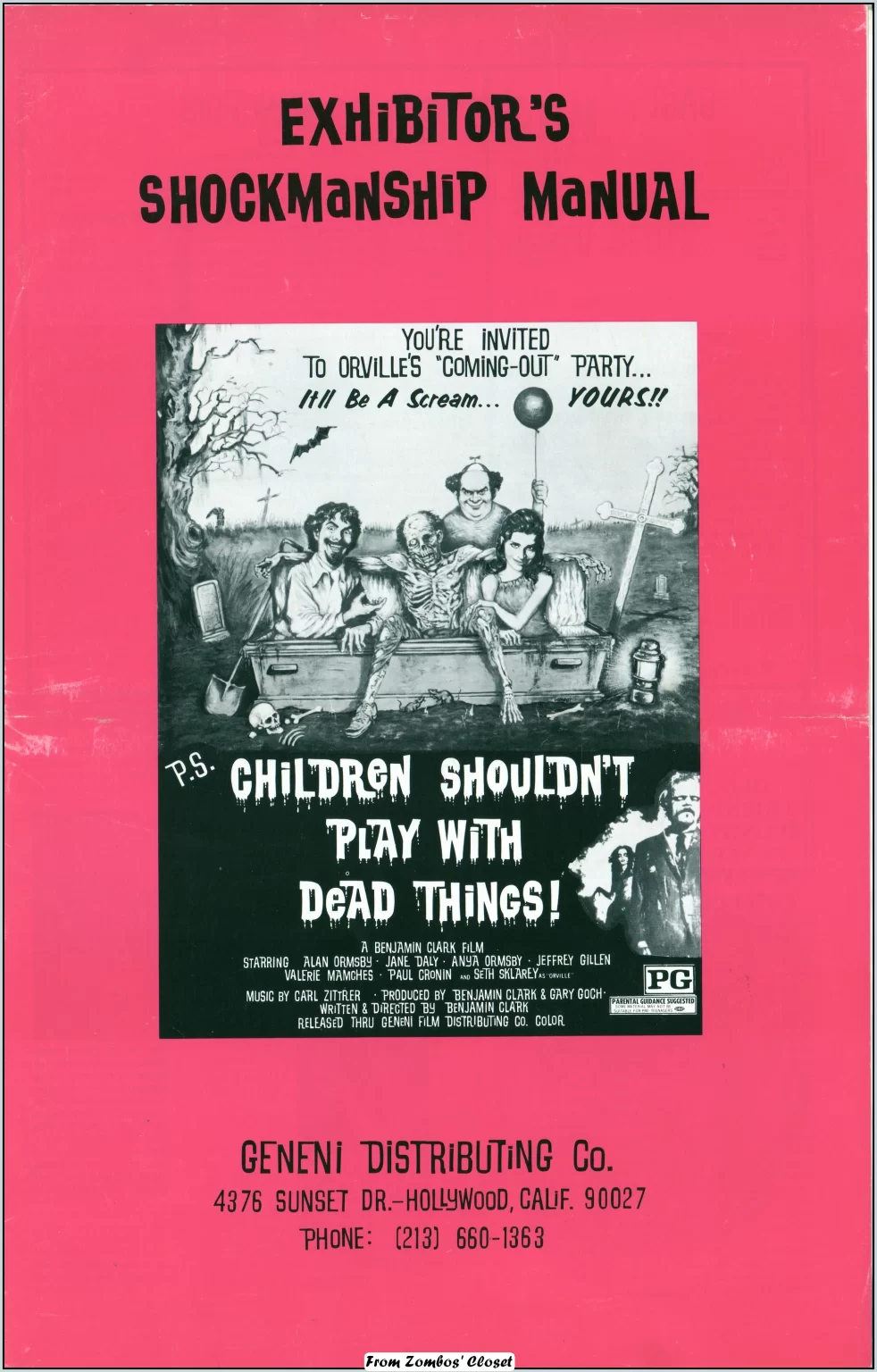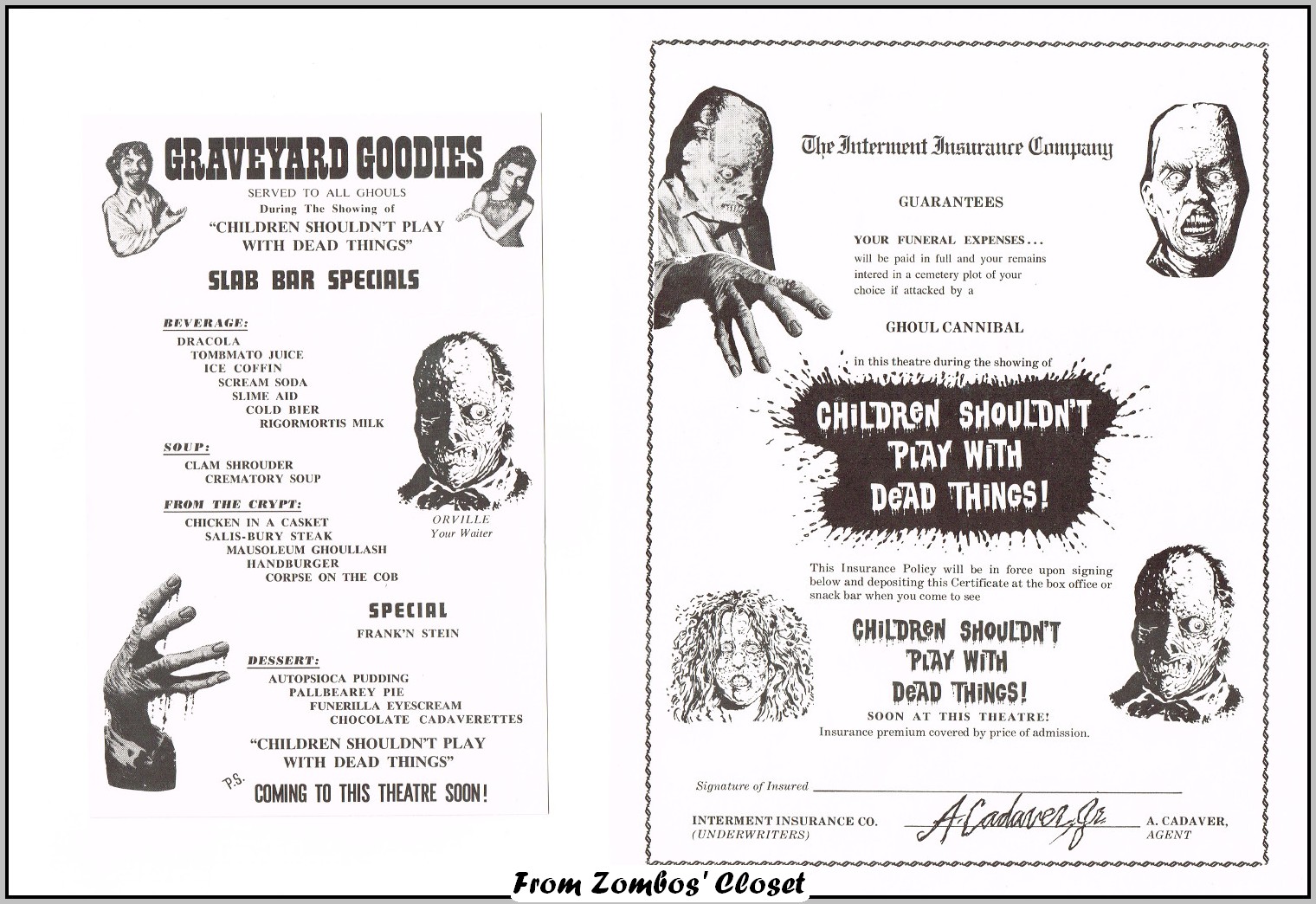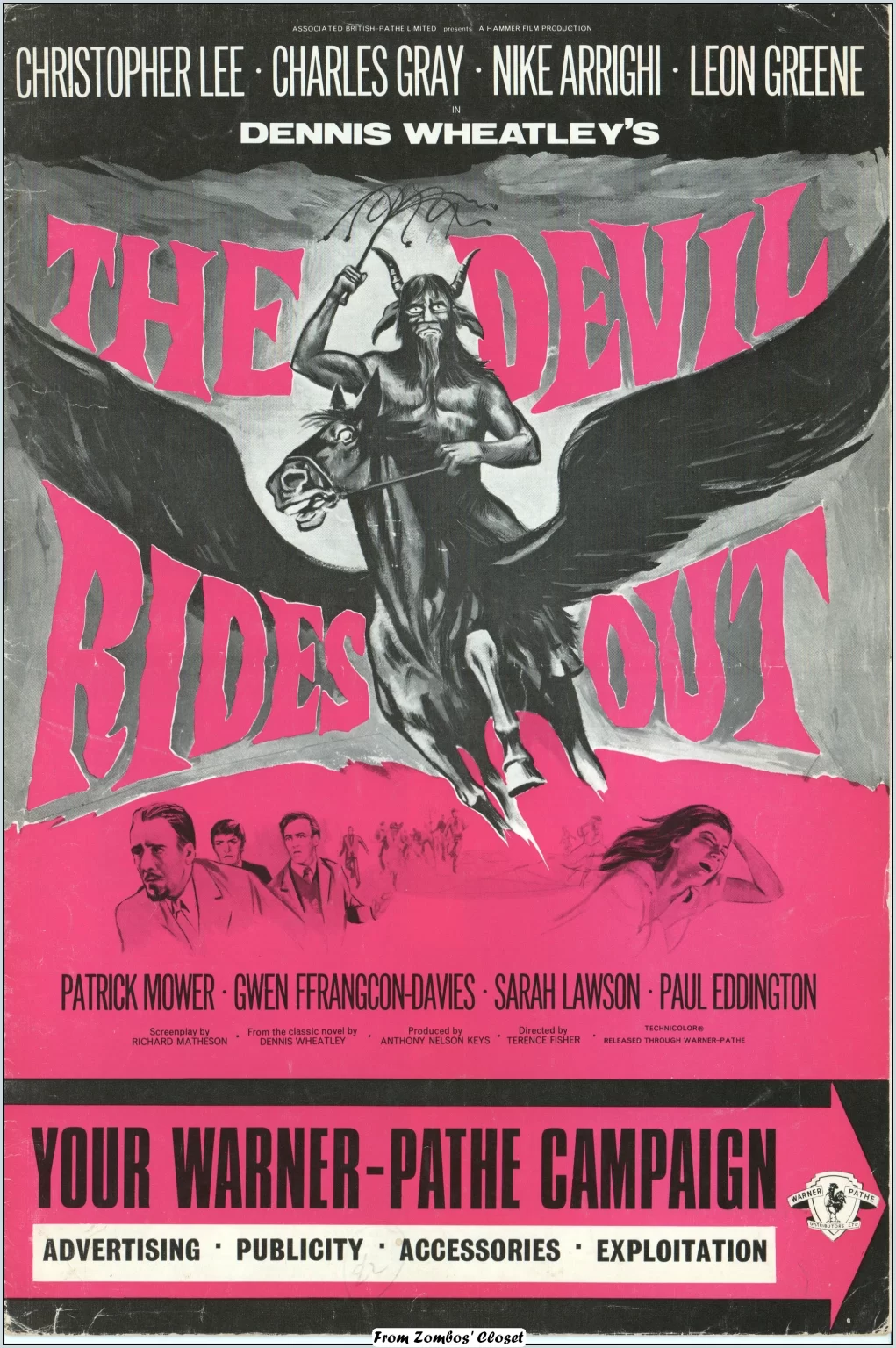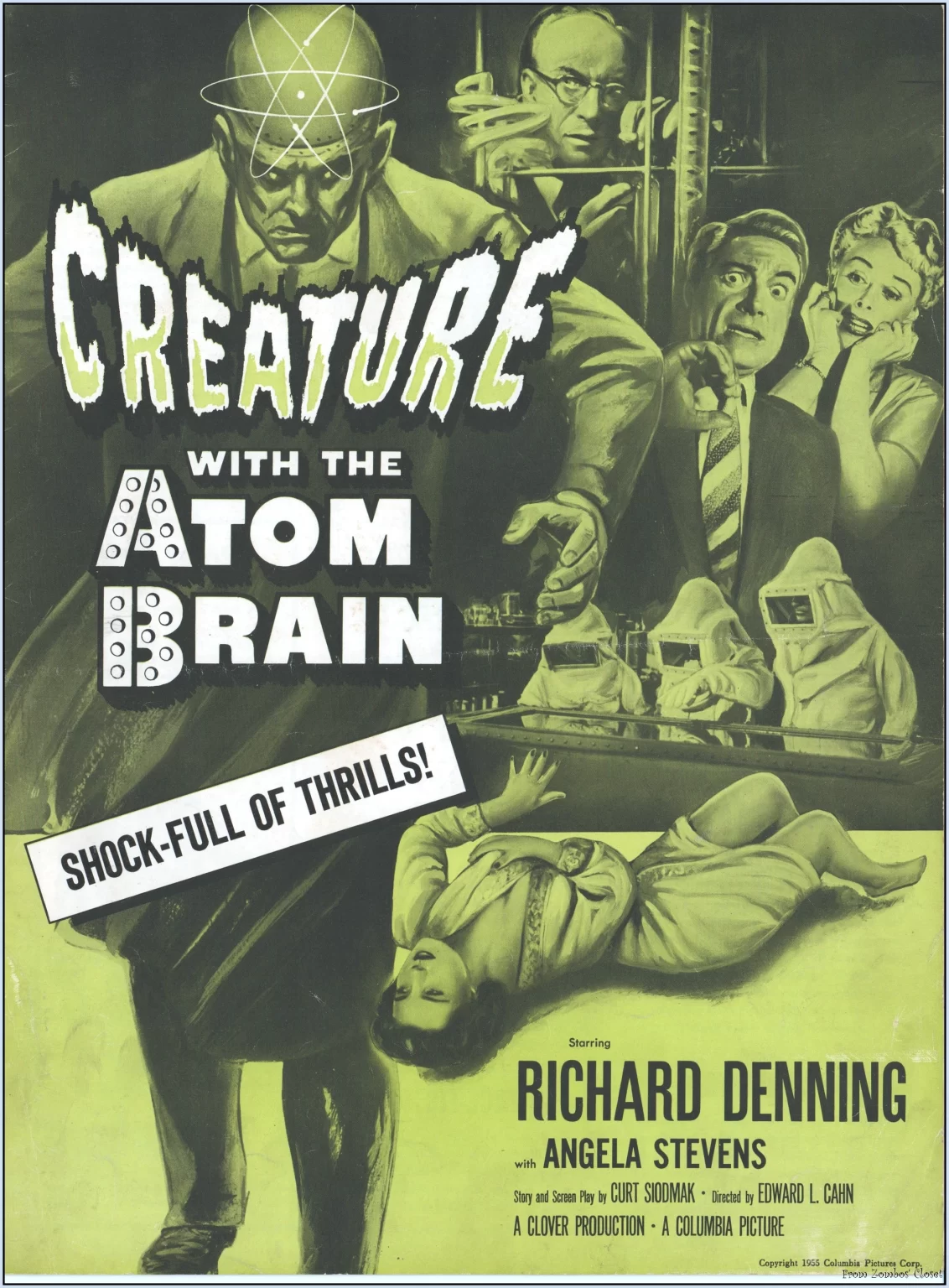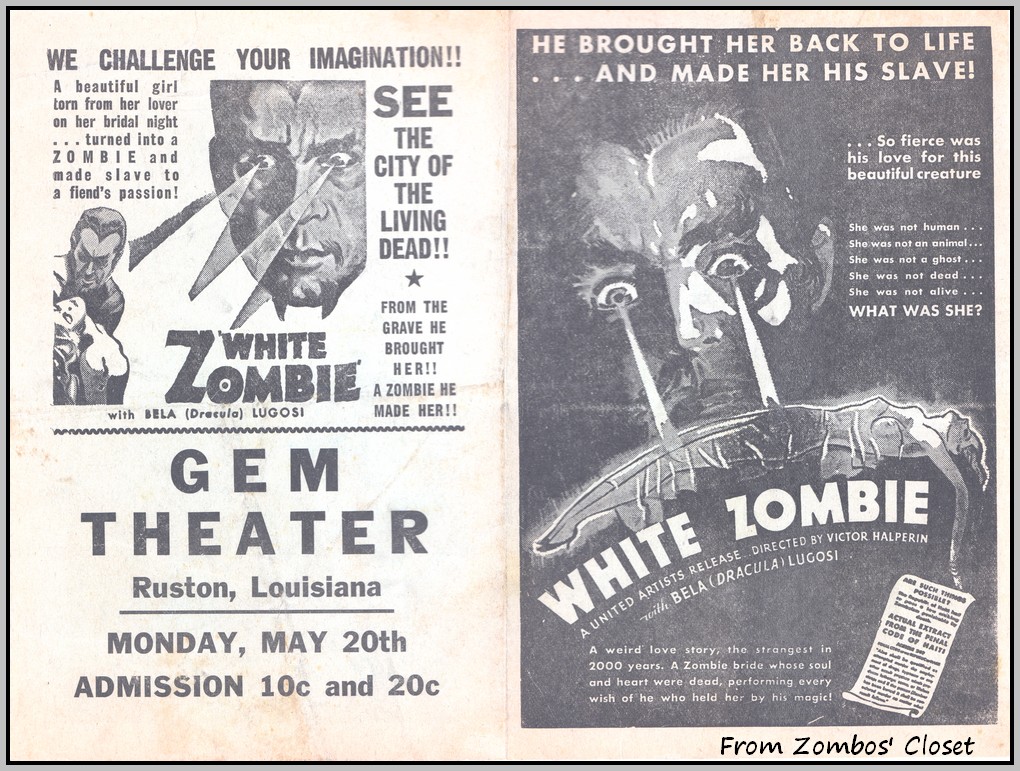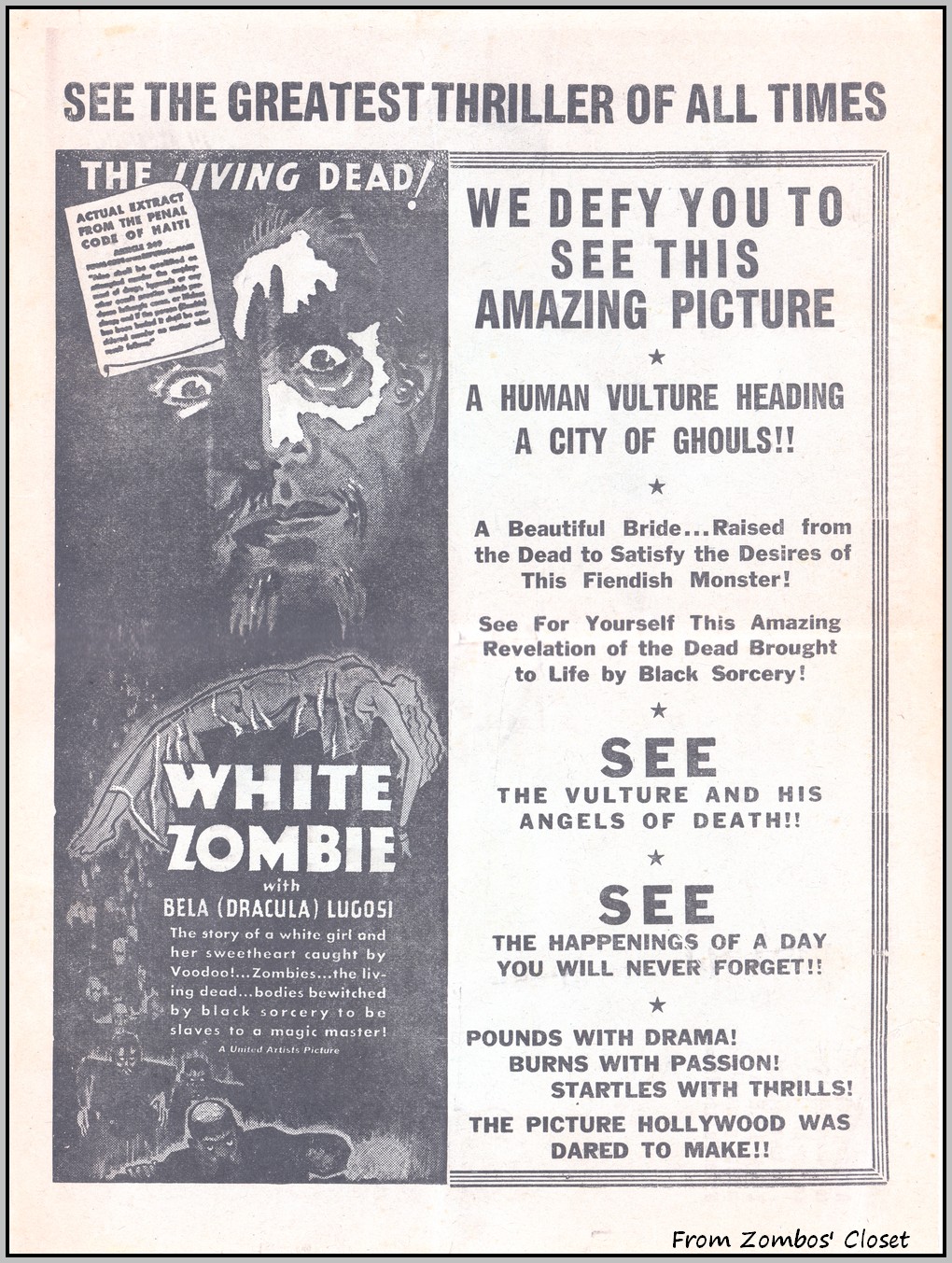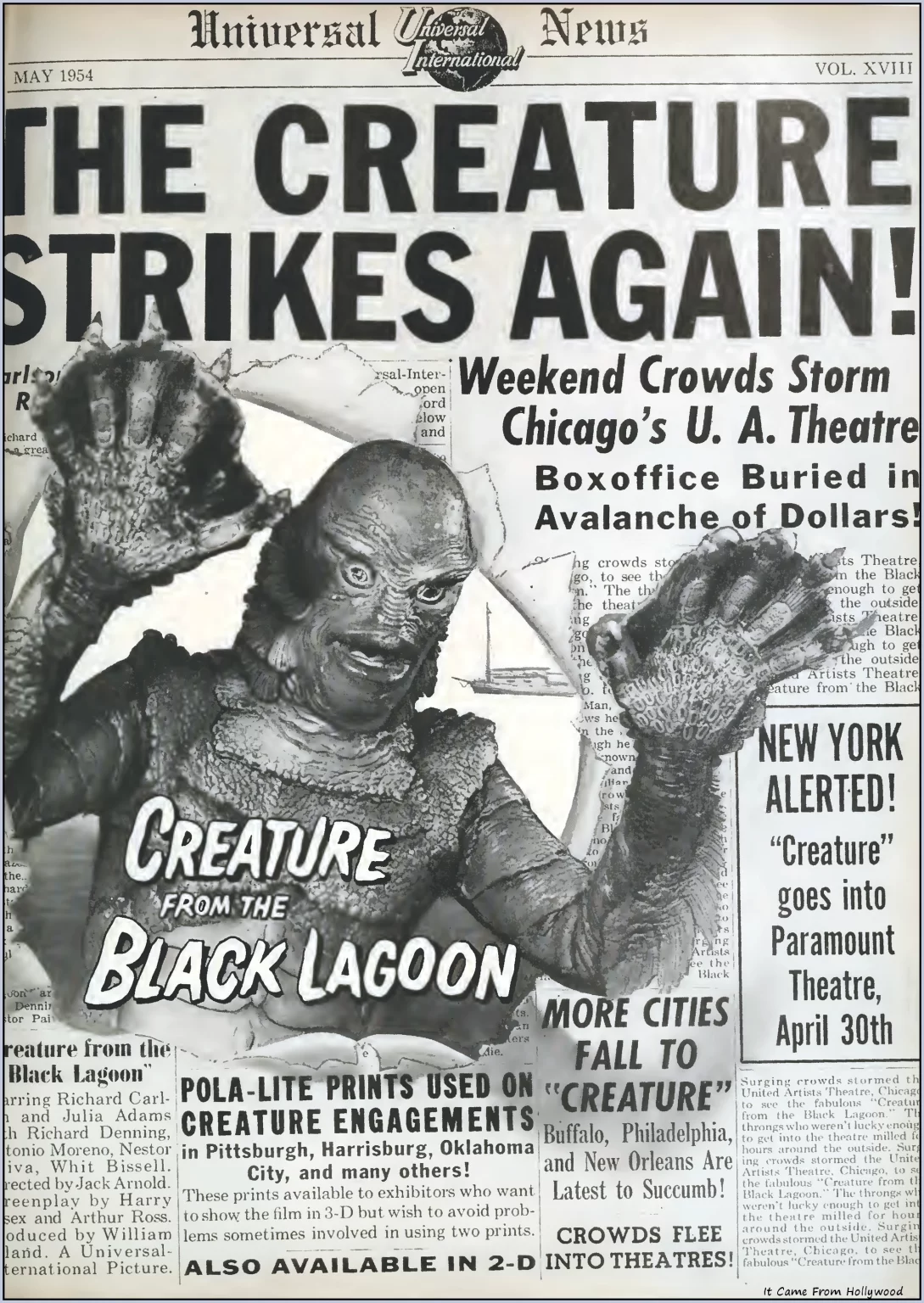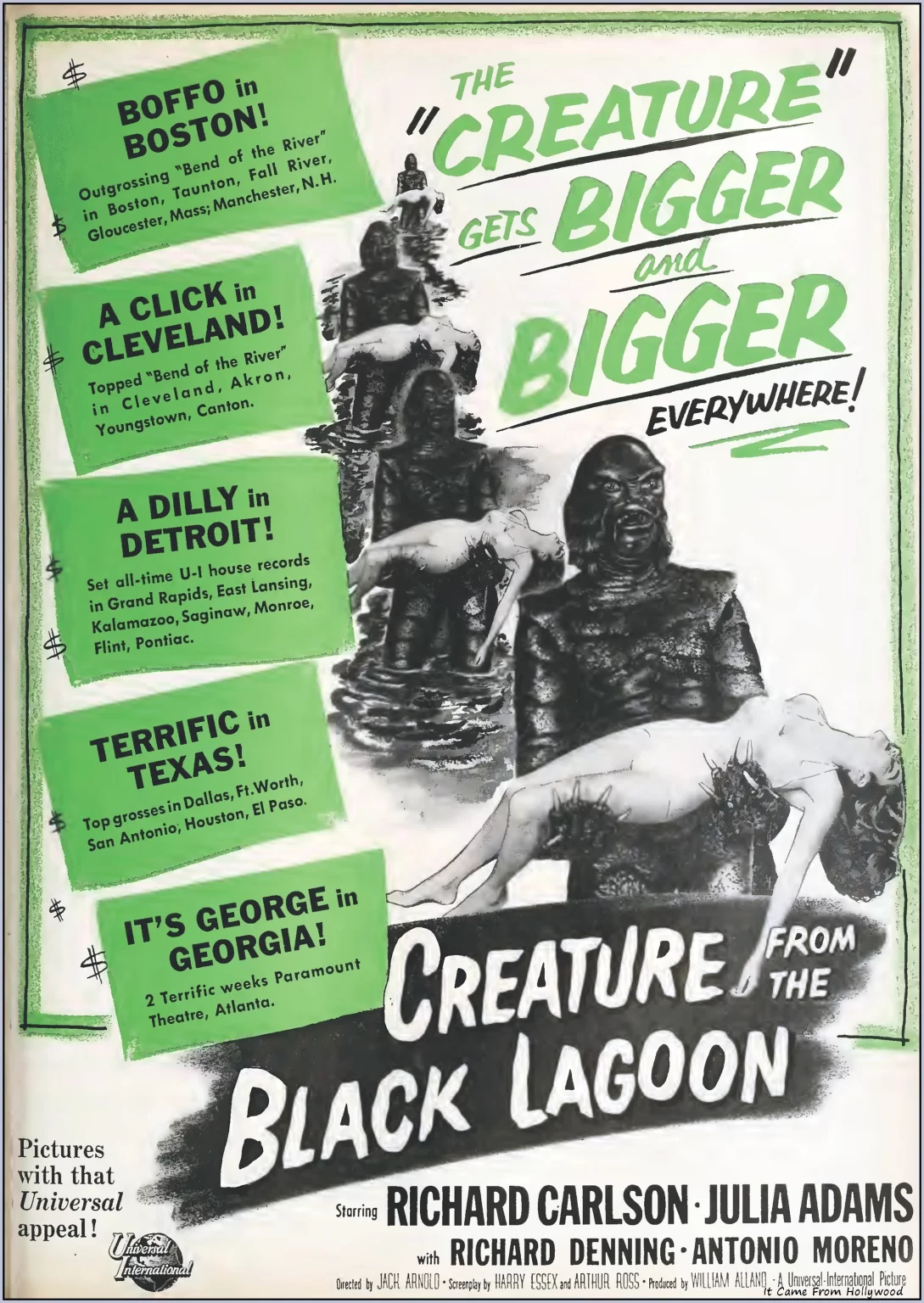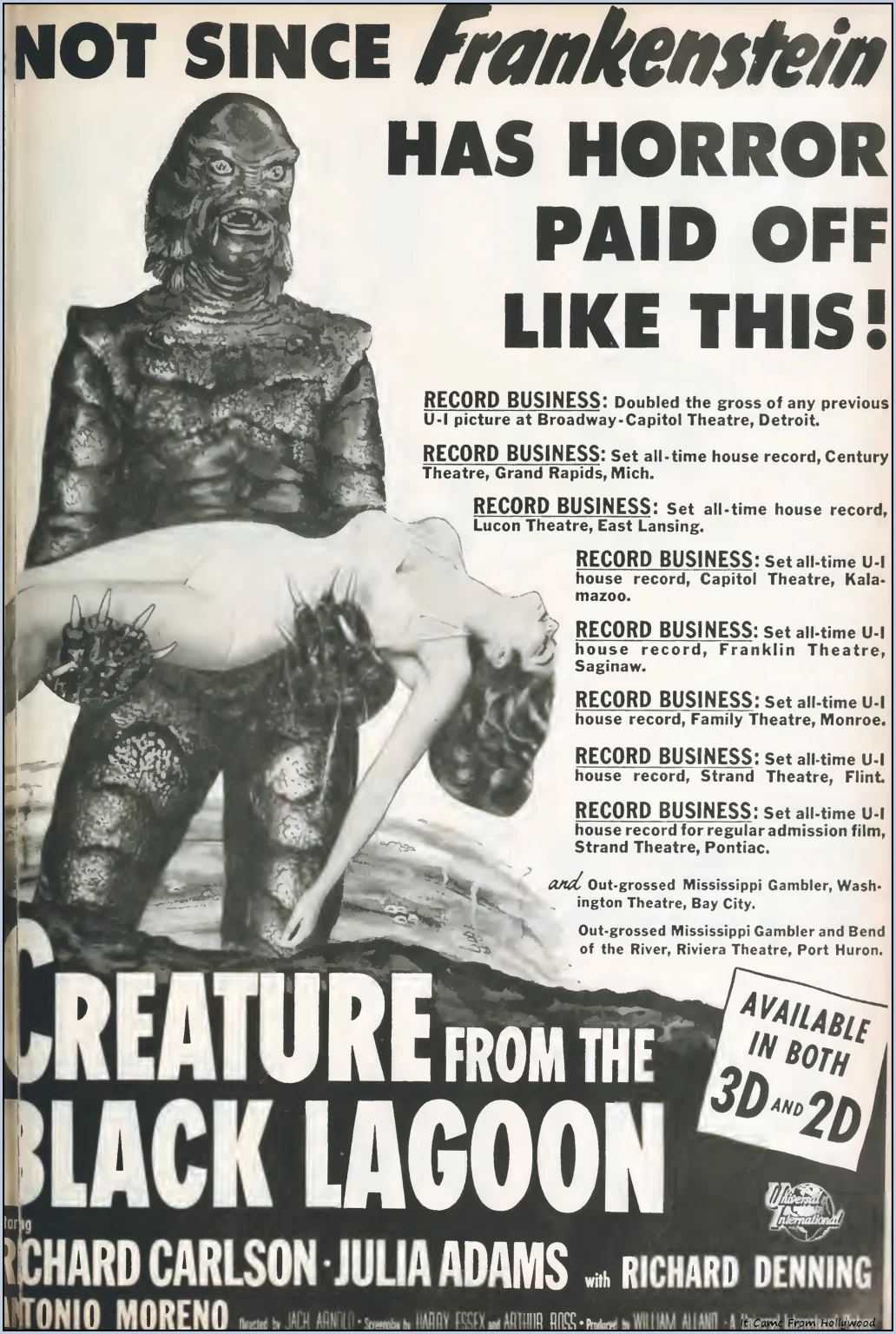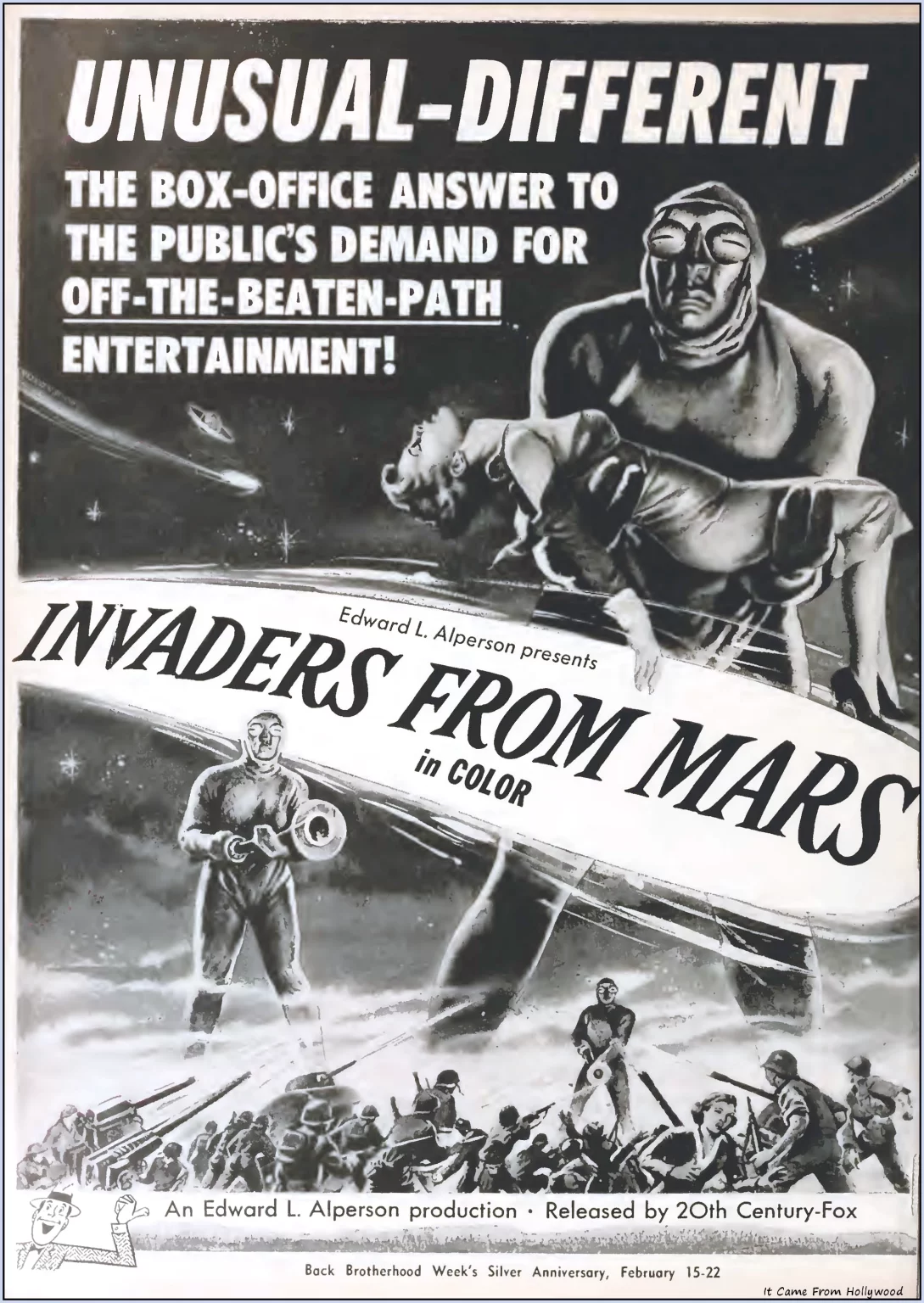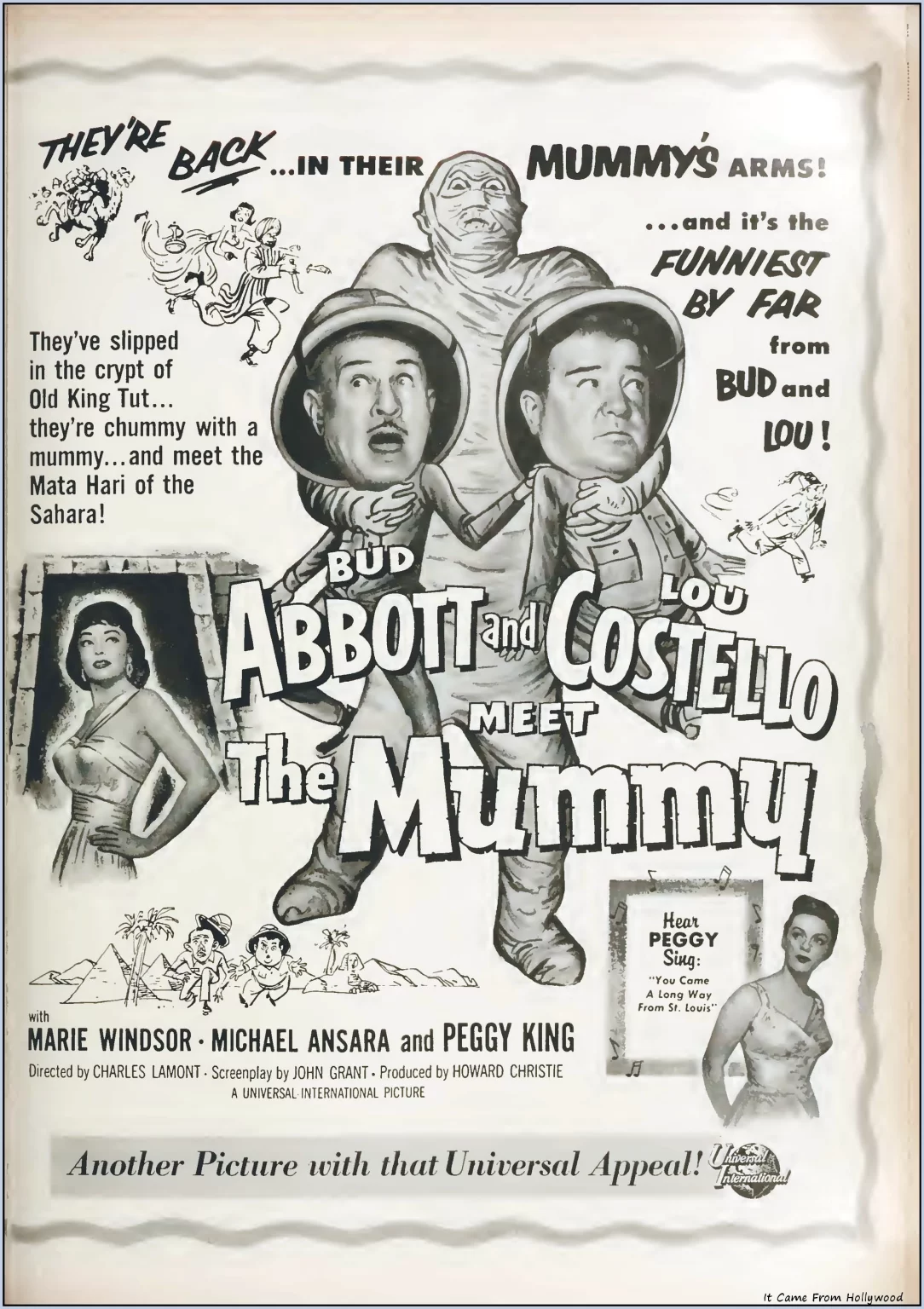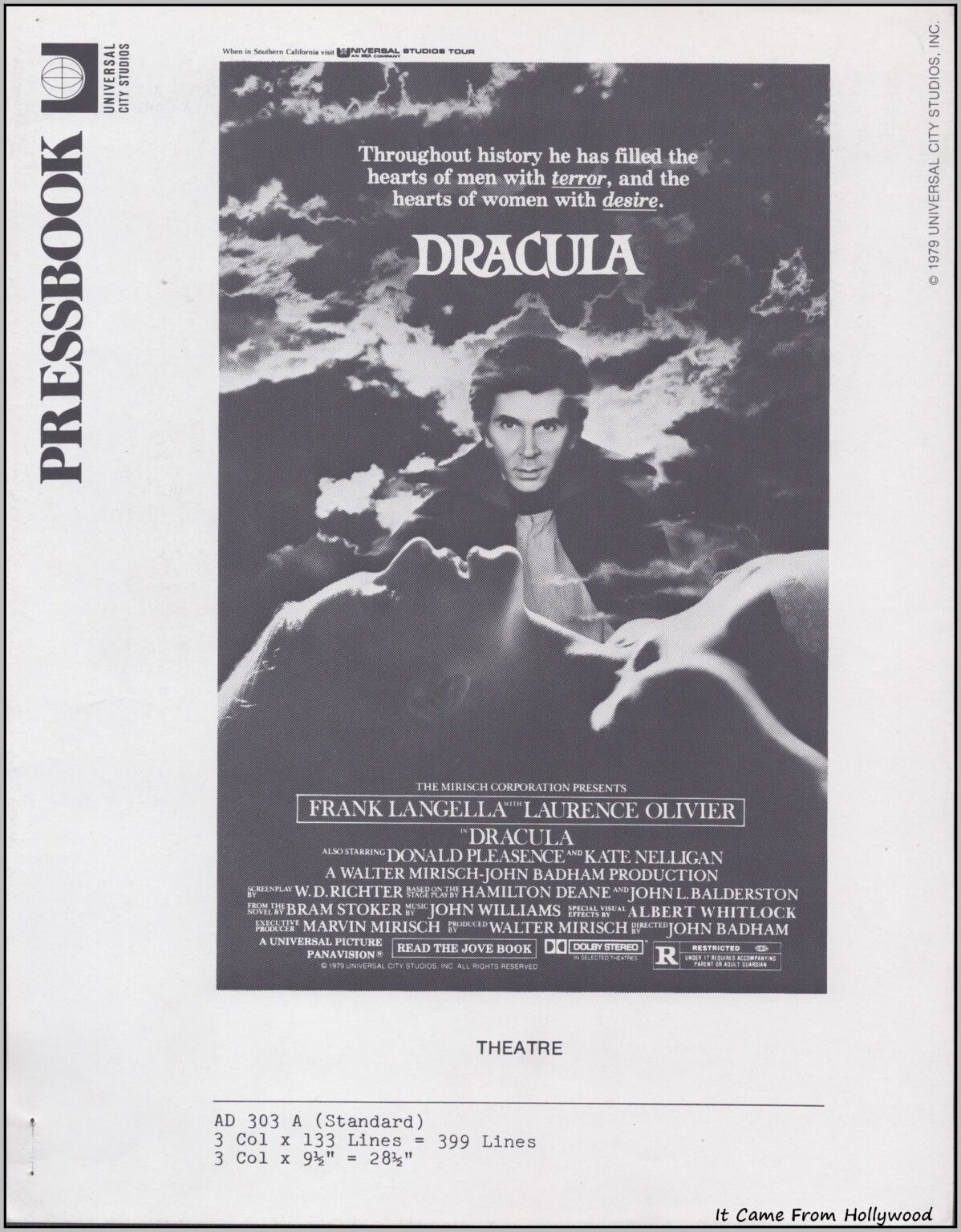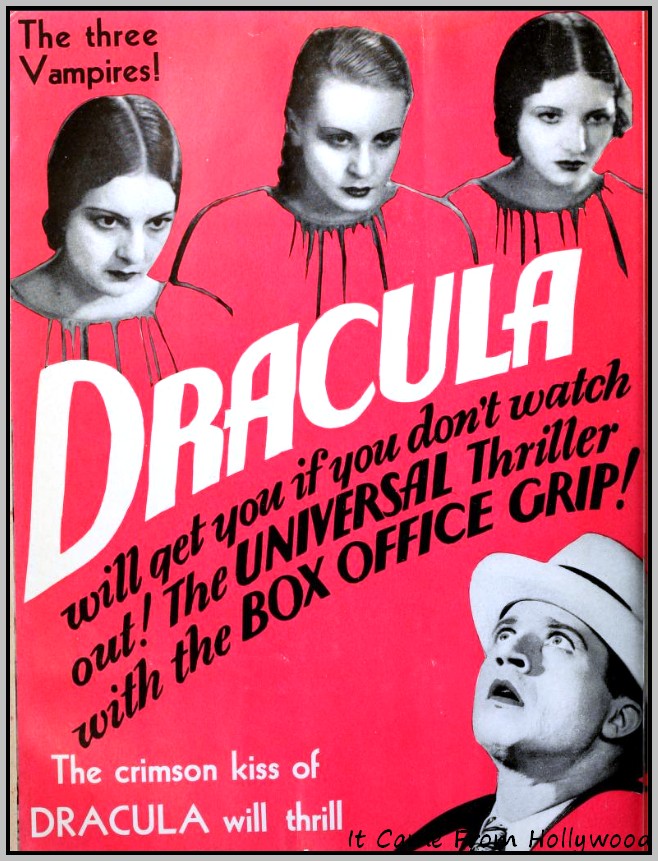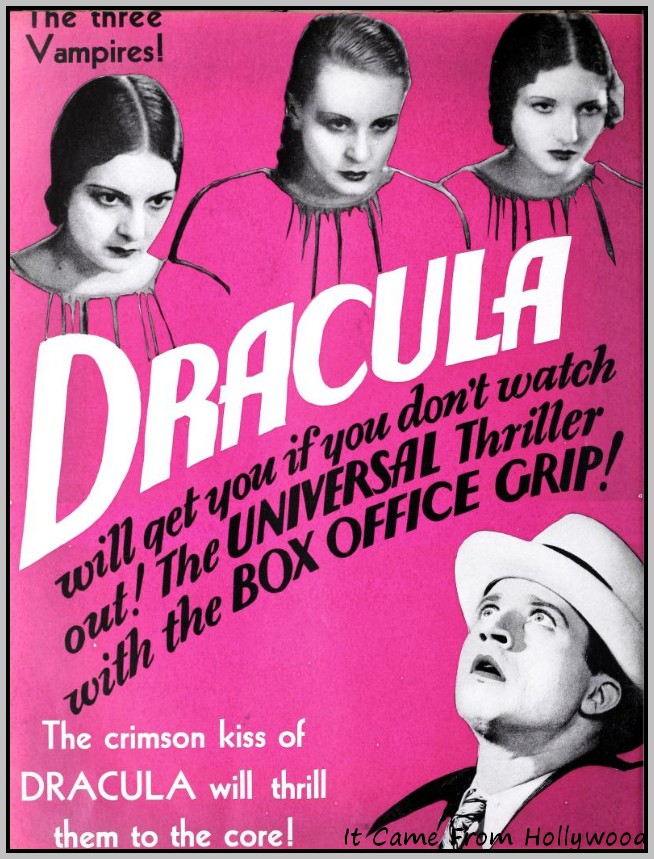Stairway to Heaven (1946) Pressbook
It’s Heavenly
This 12-page, large format, pressbook for Stairway to Heaven, 1946 (the American title), is heavenly. Lots of promotion, articles, and theater lobby eye-candy to bring in the romantic couples. You can thank director Joe Dante (Gremlins, Piranha, The Howling, need I continue?) for sending along this beauty to ZC. This movie is a fantasy romance and stands at 20 in the British Film Institutes’ 100 Best British Movies list. Operation Ethel, the massive escalator built for the titular stairway between here and there, cost a lot of money at the time, but was noteworthy onscreen. Bosley Crowther, the persnickety film critic for the New York Times liked it–a miracle right there.
Stairway to Heaven (1946) Pressbook
It’s HeavenlyRead More »

